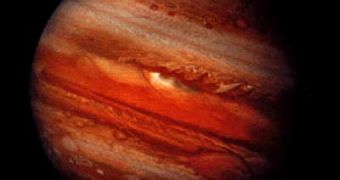Giant planets made of gas are the easiest to find outside our solar system, and more than 230 of them, many times larger than our champion, Jupiter, have been found in recent years.
While extrasolar planets in general are hard to spot because light bouncing off these planets is easily lost in the sea of brightness generated by the star around which it orbits, actually seeing smaller ones is far more difficult, because it's really like searching for a firefly next to a lighthouse lamp.
Even the heaviest planet ever discovered in orbiting a star is a Jupiter-like gas giant, HAT-P-2b, a strange alien world only slightly bigger in size but having more than eight times the weight of its cousin in our solar system.
Now, a joint study made by University of Arizona astronomers and their collaborators from the European Southern Observatory, discovered an interesting maximum limit beyond which these planets are impossible to form.
They surveyed 54 young stars near Earth and observed that those who had such gas giants around them seemed to fit into a mathematical limit. This limit implies that the formation process of such gaseous planets cannot take place beyond a certain distance from their star. "The odds are extremely slight that planets larger than four to five Jupiter masses exist at distances greater than 20 AU from these stars," concluded graduating doctoral student Beth Biller of the UA Steward Observatory.
Using a new imaging technique, they have come to the conclusion that these planets tend to form much closer to their suns, within the orbit of Mercury in our solar system, which means they circle their stars in only a few days.
"Now that we know there aren't large numbers of giant planets lurking at large distances from their stars, astronomers have a more complete picture, and can better constrain how planets are formed," she concluded.

 14 DAY TRIAL //
14 DAY TRIAL //